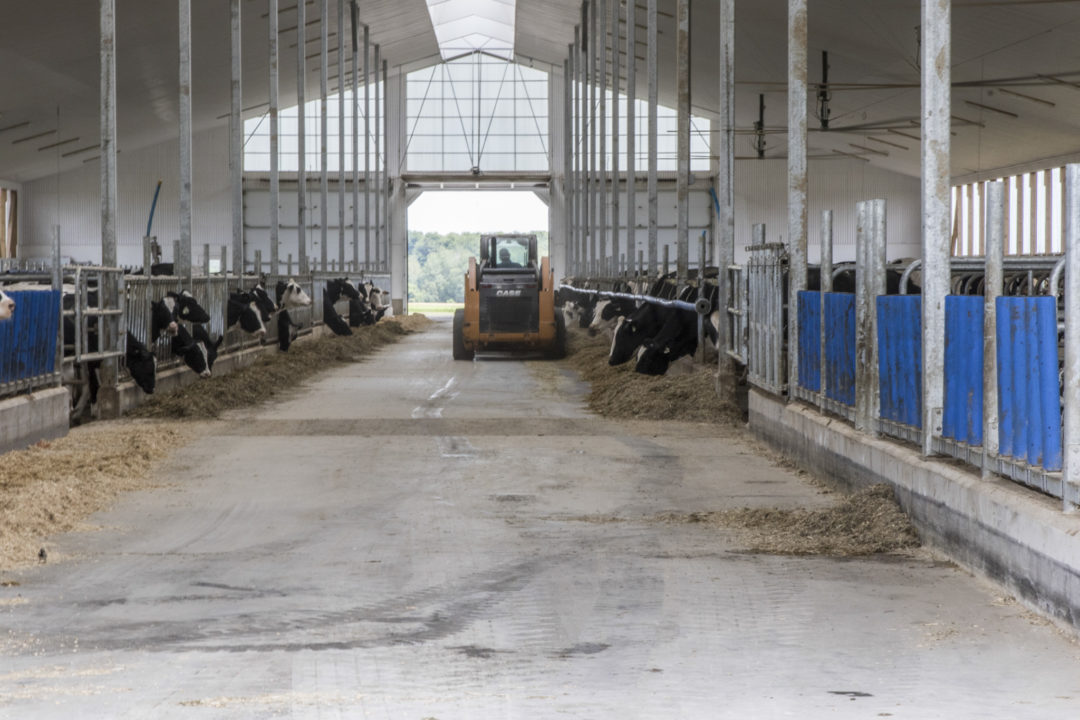To read this article in French, click here.
From inflation and interest rate spikes to rising input costs and global conflicts, the 2023 economic landscape was a turbulent one. Fortunately, it appears the storm may be quelling – at least this is what J.P. Gervais, chief economist and vice president at Farm Credit Canada, projected at the crown corporation’s recent Ag Summit, held on Dec. 12 in Red Deer, Alberta.
At the event, Gervais shared what he called an “early look” at the 2024 economy and explored emerging economic trends, along with his outlook on the factors that weigh heavily on many farm business decisions.
Here are seven of Gervais’ predictions, and what they could mean for Canadian farmowners.
1. Inflation will fall to 3%
“Inflation has been the number one economic theme of 2023 and part of 2022, as well. Now, we're looking at dealing with the aftermath of all of this,” Gervais said. Inflation is still top-of-mind for many, but signs are showing stabilized rates may be coming.
The Bank of Canada is targeting an inflation rate of 2%, which is a strong but challenging target. Gervais noted the more likely outcome is fluctuating rates between 1% and 3%, with his position being that inflation will indeed decrease. However, achieving rates lower than 3% on a consistent basis is unlikely without significant effort, as the battle against inflation will not be easily won, he warned.
2. Underlying trends in interest rates are slowly moving in the right direction
In response to rising inflation, the Bank of Canada has rapidly raised its policy rate at a pace not seen since the 1970s. As the policy rate has come up, so too have all average borrowing costs for Canadian businesses. Luckily, Gervais pointed out, this has reached its high point – for now. “We've peaked. I don't think the Bank of Canada is going to increase its overnight rate anymore,” he said.
In fact, he continued, “We think that by the end of 2024, we'll have three rate cuts of 25 basis points. That's 0.75 percent for the entire year of 2024.” Looking at the cost of borrowing, this projected decline in interest rate is useful when making borrowing and loan renewal decisions.
If you will soon be facing one such decision, Gervais’ advice was this: “The bottom line is, if you are of the mindset – for your business – where it makes sense to lock in, you like the stability of fixed rates and so forth, then you're not that far off from where [you should expect to be in the long term].”
3. Financial markets assumptions are aggressive
While the Bank of Canada’s policy is certainly a critical factor in inflation and current borrowing costs, Gervais cautioned it is not the best indicator of the long-term picture. “At the end of the day, the Bank of Canada controls short-term rates, but it doesn't control the long-term rates. It has an influence on long-term rates, but long-term rates are controlled by financial markets and, when it comes to financial markets, it's all about expectations of what will happen in 2024,” he explained.
So what are the financial markets expecting? More aggressive interest rate cuts, earlier in the year.
As Gervais presented, financial markets were projecting a rate cut as early as April, with a second coming in July. These predictions have already resulted in decreases in non-variable interest rates. Additionally, Gervais interpreted these financial market reactions and expectations as a signal that five-year government of Canada bond rates – a key indicator of the direction of interest rates and future economic activity – should be somewhere between 3% and 3.5%.
4. The strength of the labour market means wage pressures remain high
Despite inflation and high interest rates, explained Gervais, Canada is not likely to enter a recession in the short term due to the country’s strong labour market.
Canada is seeing nearly unprecedented population growth, which is contributing to this strength, but is also creating high wage pressures that are unlikely to decline. While this is beneficial from a consumption standpoint, as it helps prevent economic slowdown, for businesses it may become another burden to their bottom line.
However, for supply-managed sectors, population growth is critical. “Pushback from consumers trying to cut back on some purchases … is offset by some of the growth that we've had in population … [and] if you think of the domestic market, that's been a positive,” Gervais noted.
5. Trends in global economies are diverging
Briefly, the economics of the global economy are perplexing and worth keeping an eye on, as trends and changes in China, the U.S. and Europe are likely to have trickle-down effects for Canada.
Noting his surprise at the discrepancies between these economies, Gervais said, “I don't recall in my career having a situation such as this, where the three main economic blocs all face different [economic] situations.”
In summary, China is currently facing negligible economic growth, with no inflation; the U.S. faces significant inflation yet is projected to have higher economic growth than China, though its future is clouded by the uncertainty of a possible return to office by Donald Trump; and Europe is facing inflation without economic growth.
6. Marginal upside for dairy sector
Looking further ahead in 2024, signs are pointing to an expected decrease in feed prices – which means despite continued flat milk prices, dairy producers are expected to reach, at minimum, breakeven in terms of profitability.
7. Growth in farmland value is slowing
Relative to the previous year, farmland valuing is growing at a slower rate. Although values are not declining, this slowing growth is likely representative of a cautious market induced by higher interest rates, revenue pressure and other outside factors.
Despite unfavourable market conditions, Gervais noted the sector’s continued strength is supported by its limited supply. “It's still very, very tight and we have not yet, anyway, seen any change in the amount of land available for sale and … [that] brings reassurance that we're not going to see this market tumble or fall apart,” he said.
As always, your context and circumstance are paramount when making financial decisions of any magnitude, as is seeking professional advice. “Everybody's decision is going to be unique, in the sense that we all face unique circumstances on our farms, and there's no right or wrong answer. It just has to fit … with the strategy you have,” Gervais advised. “Conversations with your lender are critical.”
Only time will tell exactly how these market changes and predictions will unfold.










